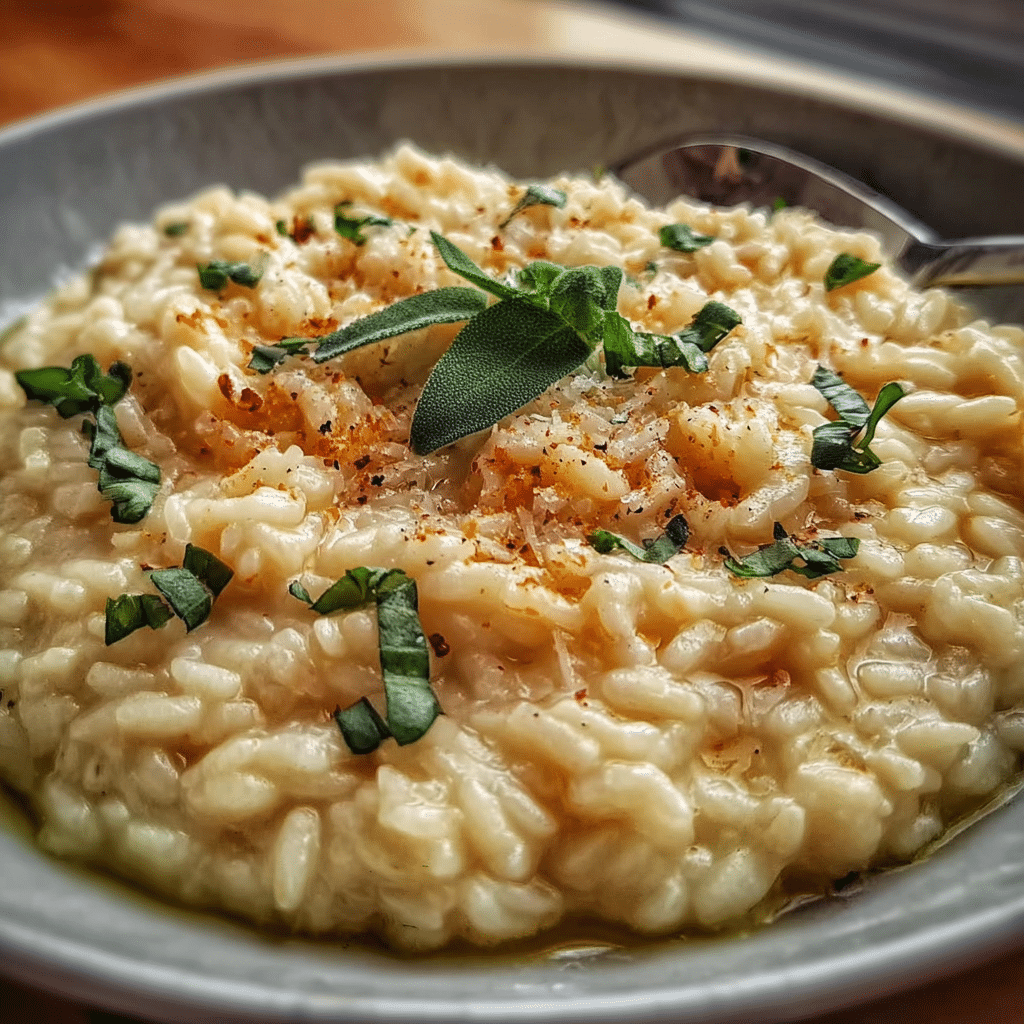Chicken rice casserole is a beloved dish that brings warmth and comfort to family gatherings and weeknight dinners alike. I remember the first time I discovered this delightful recipe; it was during a particularly hectic week when I was juggling work deadlines and family obligations. My best friend, noticing my exhaustion, invited me over for dinner. As I stepped into her cozy kitchen, the rich aroma of her chicken rice casserole filled the air, instantly lifting my spirits. The golden-brown crust and tender, juicy pieces of chicken nestled among fluffy rice and vibrant mixed vegetables were a sight to behold. That evening, I learned not just a recipe, but a whole new way to bring my family together around the dinner table.

The Story Behind This Recipe
My friend’s version of chicken rice casserole was a revelation. It was more than just a meal; it was a solution for busy families looking for quick dinner options that did not compromise on flavor or nutrition. As she served me a generous portion, she shared how her grandmother would make a similar dish, using whatever leftovers were available, turning them into a delicious one-pot meal that could feed the entire family. Inspired by her story, I decided to recreate this dish myself, adding my personal touch by incorporating seasonal vegetables and spices that spoke to my family’s taste.
This recipe is special because it beautifully marries simplicity with heartiness. The concept of a casserole dates back centuries, but the chicken rice casserole has evolved into a comforting classic that resonates with so many of us today. It’s a dish that adapts to whatever you have on hand, making it a versatile choice for any occasion. Whether you’re using leftover roast chicken, a mix of frozen vegetables, or even trying out different rice varieties, the possibilities are endless. Every time I make it, I’m reminded of the love and creativity that goes into cooking for those we care about.
Why You’ll Love This Dish
One of the reasons why chicken rice casserole is perfect for busy families is its convenience. With a few simple ingredients and minimal prep time, you can throw everything into a baking dish and let the oven do the work. After a long day, the last thing anyone wants to do is spend hours in the kitchen, and this casserole allows you to enjoy a homemade meal with minimal fuss. Plus, it’s an excellent way to sneak in those veggies that kids often resist; the melting cheese over the top can make even the pickiest eater excited about dinner.
Seasonally, this dish shines during cooler months when comfort food is in high demand. Imagine coming home after a chilly day to the smell of chicken rice casserole baking in the oven; it’s a warm embrace in culinary form. However, it can also be adapted for summer by using fresh, seasonal vegetables like zucchini and bell peppers, making it a year-round favorite.
Emotional connections to food run deep, and for me, chicken rice casserole represents love and togetherness. It’s a dish that brings back memories of laughter-filled dinners, where everyone shares stories from their day while enjoying a hearty meal. Every bite transports me back to those cherished moments, reminding me of the importance of family and the joy of sharing food. In this guide, you’ll learn not only how to make a classic chicken rice casserole but also ways to personalize it to fit your family’s preferences and dietary needs. Get ready to embark on a delicious journey that will make your kitchen the heart of your home.
The Rich History and Cultural Significance of chicken rice casserole
The rich history and cultural significance of chicken rice casserole are fascinating, showcasing how this dish has evolved from humble beginnings into a household staple. Its origins can be traced back to traditional comfort food, where the concept of a casserole was born out of necessity. In many cultures, particularly in the United States, the casserole is a practical way to prepare meals that require minimal effort while maximizing flavor. The chicken rice casserole, in particular, has roots in the mid-20th century when convenience foods began to rise in popularity. Families were busier than ever, and this dish served as a perfect solution for nourishing meals that could be prepared in advance.
Origins and History
Historically, casseroles have been a way to combine various ingredients into one dish, making them hearty and satisfying. The use of chicken and rice together is not unique to any one culture; many culinary traditions feature similar combinations for their balance of protein and carbohydrates. For instance, in many Latin American countries, arroz con pollo (rice with chicken) serves as a beloved comfort food, while in Asia, chicken and rice dishes often incorporate vibrant spices and sauces. The blending of these culinary influences is what makes the chicken rice casserole such a versatile and cherished dish.
As packaged foods became more common in the 1950s and 1960s, the chicken rice casserole gained immense popularity, often being made with cream of mushroom soup, which added flavor and moisture. This recipe became a go-to for busy homemakers who wanted to serve their families something hearty and delicious with minimal effort. Over time, the dish has evolved, with modern cooks opting for fresh ingredients, homemade sauces, and healthier alternatives to canned soups, reflecting a shift towards more wholesome eating.
Cultural Significance
Chicken rice casserole is often featured at family gatherings, potlucks, and community events, symbolizing togetherness and sharing. It’s a dish that transcends cultural boundaries, with variations found in many households around the world. In American culture, it’s often associated with comfort and nostalgia, bringing back memories of simpler times when families gathered around the table for a home-cooked meal. Its ability to adapt to different tastes and dietary preferences has allowed it to remain relevant across generations.
Moreover, during significant occasions such as holidays and family reunions, the chicken rice casserole often makes an appearance, showcasing its role as a comfort food that brings people together. It’s not merely a meal; it’s a tradition that can be passed down through generations, each adding their own twist, making it a unique representation of family heritage.
Nutritional Benefits
Beyond its comforting nature, chicken rice casserole also offers several nutritional benefits. Chicken is an excellent source of lean protein, essential for building and repairing tissues, while rice provides carbohydrates, which are a crucial energy source. Adding mixed vegetables introduces a variety of vitamins and minerals, promoting overall health. This dish can easily be tailored to be more nutritious, using brown rice instead of white, adding more vegetables, or incorporating whole grain versions of pasta or rice.
Furthermore, the flexibility of the recipe allows for accommodating various dietary needs. You can make gluten-free versions by using alternative grains like quinoa or cauliflower rice. For those looking for vegetarian options, substituting the chicken with plant-based proteins or legumes makes for a delicious and satisfying meal that maintains the essence of the chicken rice casserole.
In summary, the chicken rice casserole is not just a recipe; it’s a reflection of cultural history, a symbol of family traditions, and a canvas for nutritional creativity. As we explore this dish further, you’ll discover how to make it your own, ensuring it remains a cherished part of your family’s culinary legacy.
Essential Ingredients for Perfect chicken rice casserole
Essential Ingredients for Perfect chicken rice casserole
When it comes to comfort food, few dishes can rival a well-made chicken rice casserole. This hearty meal combines tender chicken, fluffy rice, and a medley of mixed vegetables, all brought together in a creamy sauce. To achieve the perfect chicken rice casserole, the choice and quality of ingredients are paramount. Let’s dive into the essential ingredients that will ensure your casserole is not just good, but absolutely fantastic.
Essential Ingredients
- 1 cup white rice, uncooked long or short grain
- 2 cups water
- 1 teaspoon chicken bouillon
- 3 cups frozen mixed veggies
- 2 cups chopped cooked chicken (canned or rotisserie)
- 2 cups shredded cheese
- 1 cup milk
- 1 (10.5oz) can condensed chicken soup
- 1 package (.87 oz) chicken gravy mix
- ¼ teaspoon salt
- ½ teaspoon ground pepper
- 1 teaspoon onion powder
- 1 cup shredded cheese for top, optional

Chicken and Rice Casserole with Mixed Vegetables Recipe
Ingredients
- 1 cup white rice, uncooked long or short grain
- 2 cups water
- 1 teaspoon chicken bouillon
- 3 cups frozen mixed veggies
- 2 cups chopped cooked chicken canned or rotisserie
- 2 cups shredded cheese
- 1 cup milk
- 1 (10.5oz) can condensed chicken soup
- 1 package (.87 oz) chicken gravy mix
- ¼ teaspoon salt
- ½ teaspoon ground pepper
- 1 teaspoon onion powder
- 1 cup shredded cheese for top, optional
Instructions
-
In a pot combine uncooked rice, water, and chicken bouillon. Cook according to package directions, about 20 minutes at a simmer covered.
-
Meanwhile, in a mixing bowl combine frozen veggies, chicken, and shredded cheese. Set aside.
-
In a small bowl or measuring cup combine milk, condensed cream of chicken soup, gravy mix, salt, pepper, and onion powder.
-
Pour the milk gravy mixture into the bowl of chicken, frozen veggies, and shredded cheese.
-
Once the rice is done, pour it hot right into the bowl of chicken and veggies and mix it all together.
-
Preheat the oven to 350 ℉ and prepare a 9×13 inch baking dish with baking spray.
-
Spread the mixture into the baking dish. Sprinkle 1 to 1.5 cups of shredded cheese on top of the chicken rice casserole.
-
Bake for 30 minutes until bubbly and heated through. Serve hot. Enjoy!
Each ingredient plays a crucial role in creating the creamy, savory goodness that defines a chicken rice casserole.
White Rice: The backbone of your casserole, rice acts as the starch that absorbs flavors and creates that comforting texture. Long-grain rice tends to stay fluffy, while short-grain rice can be creamier. Always opt for quality brands that are free from additives. If you’re looking for a healthier option, consider brown rice, which is packed with fiber but may require adjustments in cooking time.
Chicken Bouillon: This ingredient enhances the overall flavor profile of your dish. It’s concentrated chicken flavor in a convenient form. When purchasing chicken bouillon, look for low-sodium versions to control the saltiness of your casserole. You can also use homemade chicken stock for a richer taste.
Frozen Mixed Veggies: These provide color, texture, and nutritional value to your casserole. Always choose a mix that includes a variety of vegetables, such as carrots, peas, and corn. Frozen vegetables are pre-washed and chopped, making them a time-saver. They can be a great cost-effective solution, especially if you buy them in bulk.
Chopped Cooked Chicken: You can use leftover rotisserie chicken or canned chicken for convenience. This ingredient is the star protein of your casserole. When selecting canned chicken, look for brands with minimal additives and preservatives. If you’re using rotisserie chicken, be sure to remove the skin for a healthier option.
Shredded Cheese: Cheese adds creaminess and flavor. A blend of cheeses can elevate your casserole; consider using a mix of cheddar and mozzarella for a delightful melt. Look for freshly shredded cheese over pre-packaged for better flavor and texture.
Milk: This ingredient helps create that creamy sauce that binds everything together. Whole milk offers a richer flavor, while low-fat or almond milk can be used for lighter versions. Be cautious with plant-based milks; they should be unsweetened to avoid any unwanted flavors.
Condensed Chicken Soup: This is a classic ingredient that adds creaminess and depth of flavor. It’s essential for that nostalgic taste. Opt for organic brands when possible, as they often contain fewer preservatives.
Chicken Gravy Mix: This mix enhances the savory flavor of the casserole. If you prefer, you can make homemade gravy using chicken stock, flour, and seasonings. Always check the ingredient list for artificial flavors and preservatives.
Seasonings (Salt, Pepper, Onion Powder): These are essential for flavor enhancement. Fresh spices can significantly boost the overall taste. Opt for sea salt and freshly ground pepper for the best results. Onion powder is a great way to add a subtle sweetness and depth without the texture of fresh onions.
Shredded Cheese for Topping: This optional ingredient adds an extra layer of cheesiness and a delightful, golden-brown crust. Use your favorite cheese for topping, but be sure it melts well.
Shopping Tips
When shopping for your ingredients, freshness is key. For vegetables, check the packaging for any signs of freezer burn. For chicken, look for bright packaging and a good sell-by date. Always compare prices; sometimes local markets offer fresher produce at a better price than supermarkets.
Additionally, consider your dietary needs. Organic ingredients might be pricier, but they often provide better quality and taste. If budget is a concern, many stores have their own brands that can be more economical without sacrificing quality.
Substitutions and Alternatives
If you have dietary restrictions, there are plenty of substitutions available. For a gluten-free version, ensure that all your ingredients (such as the gravy mix and condensed soup) are gluten-free. You can substitute the rice with quinoa or cauliflower rice for a low-carb option. For a dairy-free casserole, use plant-based cheeses and milk alternatives. If you’re vegetarian, you can easily replace the chicken with tofu or chickpeas for protein.
Storage tips are also important to keep in mind. For rice, store it in a cool, dry place in an airtight container to prolong its shelf life. Frozen vegetables can be kept in the freezer for months, while cooked chicken should be eaten within a few days unless frozen. Cheese should be wrapped tightly in plastic and kept in the fridge to maintain freshness.
In conclusion, the ingredients you choose for your chicken rice casserole greatly influence the outcome of the dish. By selecting high-quality ingredients and being mindful of substitutions, you can create a delicious and comforting meal that everyone will love.
Detailed Step-by-Step chicken rice casserole Cooking Instructions
Detailed Step-by-Step chicken rice casserole Cooking Instructions
Creating a mouthwatering chicken rice casserole is not just about throwing ingredients together; it’s an art that requires a bit of preparation, attention to detail, and a dash of love. Let’s walk through the step-by-step instructions that will guide you to the perfect casserole, ensuring that each bite is packed with flavor and comfort.
Preparation Steps
- Gather Your Ingredients: Before you start cooking, gather all your ingredients. This is known as mise en place, which means having everything in its place. It makes the cooking process smoother and more enjoyable.
- Preheat Your Oven: Preheat your oven to 350°F (175°C). This is an essential step, as it ensures that your casserole cooks evenly and thoroughly.
- Cook the Rice: In a medium saucepan, combine 1 cup of white rice with 2 cups of water and 1 teaspoon of chicken bouillon. Bring to a boil over high heat, then reduce the heat to low, cover, and simmer for about 15-20 minutes or until the rice is tender and the water is absorbed. Fluff the rice with a fork and set aside.
- Prepare the Chicken: If you’re using rotisserie chicken, shred the meat into bite-sized pieces. If using canned chicken, drain it well and break it up with a fork. Make sure there are no large chunks, as you want even distribution in your casserole.
- Mix the Vegetables: Measure out 3 cups of frozen mixed vegetables. There’s no need to thaw them beforehand; they’ll cook beautifully in the oven.
Cooking Process
- Combine the Ingredients: In a large mixing bowl, combine the cooked rice, shredded chicken, frozen mixed veggies, 1 cup of milk, 1 (10.5oz) can of condensed chicken soup, and 1 package of chicken gravy mix. Add ¼ teaspoon of salt, ½ teaspoon of ground pepper, and 1 teaspoon of onion powder. Stir until everything is well combined. This is the base of your chicken rice casserole.
- Transfer to Baking Dish: Grease a 9×13-inch baking dish with cooking spray or butter. Pour the mixture into the dish, spreading it evenly. This ensures that every part of the casserole cooks uniformly.
- Add Cheese: Sprinkle 2 cups of shredded cheese evenly over the top of the casserole. This will create a deliciously gooey layer as it bakes.
- Bake: Place the baking dish in the preheated oven and bake for about 30 minutes or until the cheese is bubbly and golden brown. Keep an eye on it during the last few minutes to prevent over-browning.
Final Assembly
- Check for Doneness: The casserole should be heated through, and the cheese should be melted and slightly browned. You can insert a knife in the center; if it comes out hot, it’s ready.
- Let it Rest: Once out of the oven, let your chicken rice casserole sit for about 5-10 minutes before serving. This allows it to set and makes it easier to slice and serve.
- Garnish and Serve: If desired, sprinkle an additional cup of shredded cheese on top before serving for that extra cheesy goodness. You can also add fresh herbs like parsley or chives for a pop of color and flavor.
- Enjoy: Finally, serve your chicken rice casserole hot. It pairs wonderfully with a simple side salad or crusty bread. Enjoy the comforting warmth of this dish with your loved ones, creating memories that will last a lifetime.
Throughout the cooking process, remember the importance of visual cues and sensory indicators. The aroma that fills your kitchen is an excellent sign that your casserole is on its way to becoming a delightful centerpiece. Common mistakes to avoid include overcooking the rice initially or not allowing the casserole to rest before serving, as this can lead to a soupy consistency. By following these detailed instructions and techniques, you’ll create a chicken rice casserole that’s sure to impress and satisfy.

In terms of equipment, a sturdy baking dish and a good mixing bowl are essential. If you have a large enough skillet, you can also sauté any fresh vegetables you wish to incorporate, like bell peppers or onions, for added flavor. Timing is crucial; multitask by preparing the rice while you preheat the oven and prepare your other ingredients. Cooking is as much about planning as it is about execution, and with practice, you’ll become a pro at making this classic dish.
Temperature guidelines are vital for food safety. Ensure your chicken is cooked to an internal temperature of 165°F (74°C) to eliminate any harmful bacteria. By following these guidelines, you’ll not only create a delicious chicken rice casserole but also a safe one that you and your family can enjoy without worry.
Now that you have the complete guide to making a scrumptious chicken rice casserole, it’s time to roll up your sleeves and get cooking. The warmth and satisfaction of this dish will surely bring everyone to the table, ready to share stories and laughter over a meal that feels like home.
Professional Tips and Techniques for chicken rice casserole
When it comes to crafting the perfect chicken rice casserole, there’s much more than simply combining chicken, rice, and a medley of mixed vegetables. The art of making a delicious chicken rice casserole involves a blend of techniques, flavors, and a little personal touch. Whether you’re a seasoned chef or a home cook looking to impress, these professional tips and techniques will elevate your dish to new heights.
Professional Techniques
First and foremost, let’s talk about the essential cooking techniques that can make a significant difference in your chicken rice casserole. One of my favorite methods is to sear the chicken before adding it to the casserole. This not only locks in moisture but also creates a beautiful golden crust that adds depth of flavor. To do this, heat a tablespoon of oil in your skillet over medium-high heat. Season the chicken pieces with salt and pepper, then cook for about 3-4 minutes on each side until they are nicely browned. This simple step transforms your dish from ordinary to extraordinary!
Another technique I recommend is using homemade broth or stock instead of water. The depth of flavor that comes from a rich, homemade chicken broth enhances the overall taste of the casserole, making it hearty and satisfying. If you’re short on time, store-bought broth can work in a pinch, but opt for low-sodium versions to control the saltiness of your dish.
For the rice, consider using a long-grain variety such as basmati or jasmine. These types of rice not only have a pleasant aroma but also hold their shape well during cooking, providing a delightful texture in your casserole. If you prefer a creamier texture, arborio rice is an excellent alternative, as it releases starch and creates a luscious consistency.
Troubleshooting Guide
Even the best cooks encounter hiccups in the kitchen. If you find that your chicken rice casserole is coming out too dry, it might be due to overcooking. Always check for doneness a few minutes before the recommended cooking time. If you’re worried about dryness, consider adding a splash of broth before covering the casserole with foil in the oven.
If your casserole is too soupy, it’s likely because you used too much liquid. A good rule of thumb is to use a 2:1 ratio of liquid to rice. If your casserole is already in the oven and seems too watery, uncover it for the last 15-20 minutes of cooking to allow excess moisture to evaporate.
For those who enjoy a crispy topping, consider adding breadcrumbs or crushed crackers mixed with melted butter in the last 10 minutes of baking. This adds a delightful crunch that contrasts beautifully with the creamy interior of the casserole.
Presentation Tips
When it comes to serving your chicken rice casserole, presentation can make all the difference. Transfer the casserole to a beautiful serving dish to impress your guests. Garnish with freshly chopped parsley or chives for that pop of color and freshness. If you want to add an extra touch, a sprinkle of grated Parmesan cheese just before serving can elevate the dish further.
Pairing your chicken rice casserole with the right beverage can also enhance the dining experience. A light white wine, such as a Sauvignon Blanc or a Chardonnay, complements the flavors of the chicken and vegetables wonderfully. If you prefer non-alcoholic options, consider serving sparkling water with a slice of lemon or a refreshing iced tea.
For those looking to meal prep, chicken rice casserole is the perfect dish to make ahead of time. Assemble the casserole without baking it, cover it tightly with foil, and store it in the refrigerator for up to a day. When you’re ready to bake, simply pop it in the oven. This makes it an ideal choice for busy weeknights or family gatherings.
In terms of scaling your recipe, this chicken rice casserole is incredibly forgiving. Whether you’re cooking for two or twenty, simply adjust the quantities accordingly. Just remember to factor in larger cooking times for bigger portions. And if you have leftovers, they can be easily transformed into lunch the next day, making this dish not just delicious but also practical.
With these professional tips and techniques, you’ll be well on your way to creating a chicken rice casserole that’s not only flavorful but also visually appealing. Personal touches and thoughtful preparation will ensure that this dish becomes a staple in your home, cherished by family and friends alike.
Creative Variations and Adaptations of chicken rice casserole
When it comes to chicken rice casserole, the possibilities for creative variations are virtually endless. This dish serves as a fantastic canvas for experimenting with flavors, ingredients, and techniques. Whether you want to cater to dietary restrictions, incorporate seasonal ingredients, or simply mix things up, let’s explore some exciting adaptations you can make to this beloved classic.
Seasonal Variations
One of the joys of cooking is embracing seasonal ingredients. In the spring, consider using fresh asparagus and peas to bring a vibrant green touch to your chicken rice casserole. The crispness of these veggies adds not only color but also a delightful crunch. As summer rolls in, swap out the mixed vegetables for zucchini, bell peppers, and sweet corn for a light, summery version. The natural sweetness of these ingredients pairs beautifully with the savory chicken and rice.
In the fall, you can incorporate roasted butternut squash or sweet potatoes for a heartier, comforting dish. These ingredients add a natural sweetness that contrasts nicely with the savory flavors in the casserole. Winter calls for root vegetables like carrots and parsnips, which can be roasted to enhance their sweetness before being added to the mix. By adjusting your ingredients based on the seasons, you can keep your chicken rice casserole fresh and exciting throughout the year.
Dietary Adaptations
In today’s world, dietary restrictions are more common than ever, but that doesn’t mean you have to sacrifice flavor in your chicken rice casserole. For those following a keto diet, consider swapping the traditional rice for cauliflower rice. This low-carb alternative absorbs flavors beautifully and gives you that comforting texture without the extra carbs. Adding cream cheese or heavy cream can also enhance the creaminess of the dish, making it feel indulgent.
If you’re catering to a vegan audience, you can easily create a plant-based version by substituting chicken with chickpeas or tofu and using vegetable broth instead of chicken stock. Incorporate a variety of colorful vegetables and even some nuts for added protein and crunch. You can also explore gluten-free options by ensuring you use gluten-free broth and rice. This way, everyone can enjoy a hearty and satisfying meal, regardless of dietary preferences.
Creative Twists
For the adventurous cook, why not infuse your chicken rice casserole with international flavors? Consider a Mexican twist by adding black beans, corn, and salsa to the mix. Top with shredded cheese and fresh cilantro for a fresh take that’s bursting with flavor. Alternatively, you could go for an Italian flair by adding sun-dried tomatoes, basil, and mozzarella cheese. The possibilities are endless when you think outside the box!
Another fun idea is to change up the cooking method. While baking is traditional, you can prepare a chicken rice casserole on the stovetop for a quicker meal. Simply sauté your chicken and vegetables in a large skillet, add cooked rice, and stir in your broth until everything is heated through. For a slow-cooked version, layer your ingredients in a slow cooker and let it simmer for several hours. This method yields incredibly tender chicken and infuses the rice with rich flavors.
Leftovers from your chicken rice casserole can also be transformed into entirely new meals. For instance, you can use leftover casserole as a filling for stuffed peppers or mix it into a savory frittata. Not only does this minimize waste, but it also provides you with diverse meals throughout the week.
In conclusion, the versatility of chicken rice casserole allows for endless variations that can cater to any palate or preference. By using seasonal ingredients, adapting to dietary needs, and exploring international flavors, you can create a dish that’s uniquely yours. So grab your apron, and let your creativity flow as you craft your next chicken rice casserole masterpiece!
Storage, Reheating, and Meal Prep for chicken rice casserole
When it comes to making a chicken rice casserole, one of the best aspects is its versatility and the ease of preparation. After whipping up a delicious dish that combines tender chicken, fluffy rice, and colorful mixed vegetables, you might find yourself with leftovers. And let’s be honest, leftovers are a blessing in disguise! Not only do they save time during busy weeknights, but they also allow you to enjoy that comforting taste of chicken rice casserole all over again. To ensure that your leftovers stay fresh and safe to eat, let’s dive into the detailed storage, reheating, and meal prep strategies that will keep your casserole in tip-top shape.
Short-term Storage
After you’ve savored your chicken rice casserole, it’s important to store the leftovers properly. The first step is to let the casserole cool down to room temperature. This prevents condensation from forming inside your storage containers, which can lead to sogginess. Once cooled, transfer the casserole to airtight containers. Glass containers are my personal favorite because they don’t stain and are microwave-safe, making reheating a breeze. If you’re using plastic containers, ensure they are labeled as BPA-free and safe for food storage.
In the refrigerator, your chicken rice casserole can last for about 3 to 4 days. To maximize freshness, try to consume it within this timeframe. When packing the casserole, consider portioning it out into individual servings. This not only makes it convenient for quick meals but also helps to reduce waste, as you only take out what you need.
Also, don’t forget to label your containers with the date. This simple step can prevent any confusion down the line, ensuring that you enjoy your chicken rice casserole at its best. Trust me, nothing is worse than discovering a forgotten dish in the back of the fridge!
Freezing and Long-term Storage
If you have a larger batch of chicken rice casserole or simply want to extend its shelf life, freezing is an excellent option. To freeze your casserole, first, allow it to cool completely. Then, you can either freeze it in the same container (if it’s freezer-safe) or transfer it to a freezer-safe bag. If using a bag, make sure to squeeze out as much air as possible before sealing it to prevent freezer burn.
When stored properly, chicken rice casserole can last in the freezer for up to 2 to 3 months. For optimal quality, try to consume it within the first month. If you find yourself with several portions, consider labeling the bags with the date and the contents—this will help you keep track of what you have on hand.
One tip I’ve learned is to freeze the casserole in smaller portions. This way, you can easily thaw only what you need instead of defrosting the entire dish. Plus, it makes for a perfect quick lunch or dinner option on those busy days when cooking just isn’t in the cards.
Reheating Best Practices
Reheating chicken rice casserole can be tricky if you’re not careful. The goal is to warm it through without drying it out or making the rice mushy. The best method for reheating is in the oven. Preheat your oven to 350°F (175°C) and place the casserole in an oven-safe dish. Cover it with aluminum foil to retain moisture and heat for about 20-30 minutes, or until it reaches an internal temperature of 165°F (74°C).
If you’re short on time, the microwave is a viable option too. Place a portion of your casserole in a microwave-safe bowl, adding a splash of chicken broth or water to keep it moist. Cover it with a microwave-safe lid or wrap it in a damp paper towel and heat it in short intervals, stirring in between until heated through.
Regardless of the method you choose, always ensure that your casserole is heated to the appropriate temperature to maintain food safety. Using a food thermometer can take the guesswork out of reheating and ensure that your chicken rice casserole is safe to eat.
Lastly, it’s important to note food safety considerations when it comes to storing and reheating your chicken rice casserole. Always be mindful of the ‘two-hour rule’ – don’t leave cooked food at room temperature for more than two hours. If you’re unsure about the safety of your leftovers, it’s better to err on the side of caution. Your health and well-being are paramount!

In conclusion, understanding how to properly store, freeze, and reheat your chicken rice casserole can enhance your meal prep game and allow you to enjoy this comforting dish long after it’s been made. With these tips in hand, you can confidently dive into your next casserole adventure!
Nutritional Benefits and Health Information
Chicken rice casserole is more than just a comforting meal; it’s also packed with a variety of nutritional benefits that can contribute to a balanced diet. When preparing this dish, you’re not just throwing together some ingredients; you’re creating a wholesome meal that can be tailored to fit various dietary needs. Let’s explore the nutritional profile of chicken rice casserole and uncover the health benefits of its key ingredients.
Nutritional Profile
At its core, chicken rice casserole typically consists of three primary components: chicken, rice, and mixed vegetables. This trifecta provides a balanced blend of macronutrients and micronutrients. A standard serving of chicken rice casserole (approximately 1 cup) can range from 300 to 450 calories, depending on the specific ingredients and portion size.
This dish delivers a hearty dose of protein, primarily from the chicken. For instance, a 3-ounce serving of cooked chicken breast provides about 25 grams of protein, which is crucial for muscle repair and growth. The rice adds carbohydrates, which serve as the body’s primary energy source. Brown rice, often preferred for its nutritional value, is a whole grain that offers fiber, which aids in digestion and promotes a feeling of fullness.
Additionally, the mixed vegetables add essential vitamins and minerals. For example, carrots provide beta-carotene, while broccoli is a great source of vitamin C and vitamin K. This colorful medley not only enhances the aesthetic appeal of your chicken rice casserole but also boosts its overall nutritional content.
Health Benefits
One of the standout features of chicken rice casserole is its ability to be a nutrient-dense meal option. The protein from the chicken supports muscle health and is essential for various bodily functions, including hormone production and immune response. The inclusion of vegetables enhances your intake of antioxidants, which play a vital role in combating oxidative stress and inflammation.
Moreover, the fiber from the rice and vegetables can contribute to heart health by helping to lower cholesterol levels and maintain healthy blood sugar levels. This is particularly important for those managing diabetes or looking to maintain steady energy throughout the day. The fiber content also aids in digestion, reducing the likelihood of gastrointestinal discomfort.
For those looking to maintain or lose weight, chicken rice casserole can be an excellent option. It’s filling due to its protein and fiber content, making it less likely that you’ll overeat. When combined with a variety of vegetables, the meal becomes even more satisfying and nutritious.
Dietary Considerations
When it comes to dietary considerations, chicken rice casserole can be adapted to meet various needs. For individuals with gluten sensitivities, using gluten-free rice can ensure that the dish remains safe to consume. Similarly, for those following a low-carb diet, substituting rice with cauliflower rice can create a lighter version of the casserole without sacrificing flavor.
For vegetarians or vegans, simply swapping out the chicken for a protein-rich alternative, such as chickpeas or tofu, can create a delicious plant-based version. The versatility of this dish means that it can easily cater to different dietary restrictions without compromising on taste.
In terms of allergens, chicken rice casserole is generally free from common allergens if made with basic ingredients. However, always be cautious of added ingredients, such as cream soups or certain seasonings, which may contain allergens like dairy or nuts.
In conclusion, chicken rice casserole is not just a comfort food; it’s a meal that can be both nutritious and satisfying. With its balance of macronutrients and the ability to adapt to various dietary needs, it’s a dish that can fit seamlessly into many meal plans. So the next time you prepare your chicken rice casserole, take a moment to appreciate the health benefits that come with each delicious bite!
Frequently Asked Questions About Chicken Rice Casserole
Simple chicken and rice casserole with mixed vegetables
A simple chicken and rice casserole with mixed vegetables is a hearty dish that combines tender chicken, fluffy rice, and nutritious veggies in one pot. To create this dish, start by sautéing onions and garlic in a bit of olive oil for added flavor. Use a rotisserie chicken for convenience, shredding the meat and mixing it with cooked rice, frozen mixed vegetables, and a simple seasoning blend of salt, pepper, and herbs like thyme or rosemary. Bake in a preheated oven at 350°F for about 30-40 minutes, allowing the flavors to meld. For an extra creamy texture, consider adding a dollop of sour cream or cream cheese before baking.
Easy chicken and rice casserole with mixed vegetables
This easy chicken and rice casserole with mixed vegetables is perfect for busy weeknights, as it requires minimal prep and just one baking dish. Begin by combining uncooked rice, chicken broth, and your choice of frozen mixed vegetables in a large casserole dish. Layer seasoned, diced chicken on top, and cover everything with aluminum foil to ensure moisture retention while baking. Cook at 375°F for about 45 minutes, then uncover and bake for an additional 10-15 minutes to achieve a nice golden top. Stir it well before serving to evenly distribute the flavors and textures.
Healthy chicken and rice casserole with mixed vegetables
For a healthy chicken and rice casserole with mixed vegetables, opt for brown rice instead of white for added fiber and nutrients. Incorporate lean chicken breast and a variety of colorful vegetables like bell peppers, broccoli, and carrots to enhance the nutritional profile. Use low-sodium chicken broth and Greek yogurt instead of cream soups to reduce calories and fat while maintaining creaminess. Bake the casserole at 350°F for about an hour, ensuring the chicken is fully cooked and the rice is tender. Top with fresh herbs like parsley or cilantro for a burst of flavor and freshness.
Easy chicken rice vegetable casserole
This easy chicken rice vegetable casserole is a comforting dish that brings together tender chicken, rice, and a medley of vegetables with minimal effort. Start by preheating your oven and greasing a casserole dish. Mix uncooked rice with your choice of vegetables, such as peas and carrots, and add cooked chicken cubes seasoned with garlic powder, onion powder, salt, and pepper. Pour chicken broth over the mixture, cover with foil, and bake at 375°F for about 45 minutes. For a crispy topping, remove the foil during the last 10-15 minutes of baking.
Grandma’s chicken and vegetable rice bake recipe
Grandma’s chicken and vegetable rice bake recipe often evokes nostalgia with its comforting flavors and homestyle preparation. To recreate this classic, start with a base of long-grain white rice and combine it with cooked, shredded chicken, your choice of vegetables like green beans or corn, and a creamy sauce made from condensed cream of chicken soup. Season generously with herbs such as thyme and parsley for authentic flavor. Bake at 350°F for about 30-35 minutes, and for a touch of Grandma’s magic, consider adding a sprinkle of cheddar cheese on top just before serving.
Pioneer Woman chicken rice casserole
The Pioneer Woman chicken rice casserole is known for its hearty, comforting qualities, making it a family favorite. Begin by sautéing diced onions and garlic in butter to create a rich base, then add in cooked rice and shredded chicken. Incorporate a homemade sauce made from chicken broth, cream, and spices to keep the dish moist and flavorful. Bake covered at 375°F for 30 minutes, then uncover and bake for an additional 10-15 minutes to create a golden crust. For added flavor, consider garnishing with fresh herbs or a sprinkle of paprika before serving.
Healthy chicken rice vegetable casserole
For a healthy chicken rice vegetable casserole, focus on whole ingredients that provide nutrition without sacrificing flavor. Use brown rice as your base, along with lean chicken breast and a variety of fresh or frozen vegetables like zucchini, spinach, and bell peppers. Instead of traditional soup, create a light sauce using low-fat yogurt mixed with herbs and spices to bind the ingredients together. Bake in a preheated oven at 350°F for about 45 minutes, ensuring the chicken is cooked through and the rice is tender. Serve with a side salad for a well-rounded, nutritious meal.
Chicken rice vegetable casserole no soup
If you’re looking for a chicken rice vegetable casserole without soup, consider using a combination of broth and a homemade sauce for moisture and flavor. Start by mixing uncooked rice with vegetables like broccoli and carrots, and add diced chicken seasoned with your favorite spices. Instead of soup, create a simple sauce using chicken broth, milk, and a touch of flour to thicken it up. Pour the sauce over the rice and chicken mixture, cover, and bake at 375°F for about 45-50 minutes until bubbly and the rice is cooked through. This method not only eliminates canned soups but also allows you to control the ingredients and flavors in your casserole.





